Since version 2026, Flux 3D and Flux PEEC are no longer available.
Please use SimLab to create a new 3D project or to import an existing Flux 3D project.
Please use SimLab to create a new PEEC project (not possible to import an existing Flux PEEC project).
/!\ Documentation updates are in progress – some mentions of 3D may still appear.
Initialization by static calculation: operation
Static initialization
To avoid this problem of “numeric transient”, initial conditions of the « Initialization by static calculation » type can be taken into account with Flux. The goal of this option is to initialize a time computation in order to avoid transient phenomena with no physical meaning.
These calculation conditions are presented in the following blocks.
Conditions of calculation
The initialization by static calculation is characterized by particular calculation conditions for the first time step: conditions, which permit to annul all the terms in d/dt at the step t = 0 s.
These conditions are summed up in the table below.
| Element of the device | Hypotheses / conditions of calculation at t = 0 s | ||
|---|---|---|---|
| in the finite elements domain | in the electric circuit | ||
| Solid conductor | Active (circuit coupling) |
skin effects, proximity effects are not taken into consideration (= non magnetic conducting regions) |
DC resistance (electric conduction resistance) |
|
passive (no circuit coupling) |
Induced currents are not taken into consideration (= non conducting magnetic region) |
- | |
| Coil conductor |
Current in coil (=circuit current) |
resistance (of coil conductor) |
|
| Element of the device | in the electric circuit | |
|---|---|---|
| Resistor |
Resistance (values of the Resistor component) |
|
| Inductor |
Inductance replaced by a resistor with small resistance |
|
| Capacitor |
with initial voltage Uc |
Capacitor replaced by a voltage source * (U = Uc) |
|
without initial voltage |
Capacitor replaced by an open circuit |
|
Example 1
Magnet placed at the center of the coil
| Finite elements description: | Circuit description: |
|---|---|
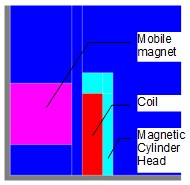
|
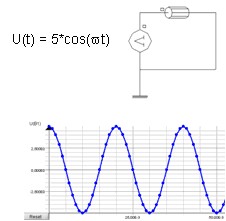
|
| Results without SI : | Results with SI : |
|---|---|
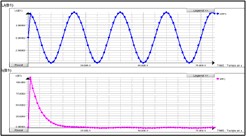
|
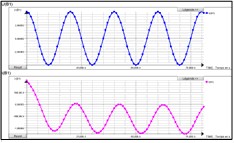
|
Example 2
Variable reluctance speed sensor as describe in the Generic Tutorial for Flux 3D
| Finite elements description: | Circuit description: |
|---|---|
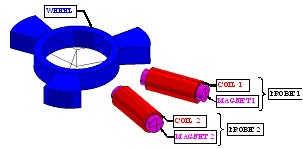
|
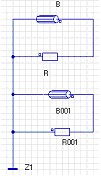
|
Results with and without SI:
